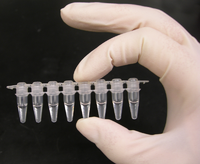
Photo from wikipedia
Non-enzymatic glycation is an unavoidable reaction that occurs across biological taxa. The final products of this irreversible reaction are called advanced glycation end-products (AGEs). The endogenously formed AGEs are known… Click to show full abstract
Non-enzymatic glycation is an unavoidable reaction that occurs across biological taxa. The final products of this irreversible reaction are called advanced glycation end-products (AGEs). The endogenously formed AGEs are known to be bioactive and detrimental to human health. Additionally, exogenous food-derived AGEs are debated to contribute to the development of aging and various diseases. Receptor for AGEs (RAGE) is widely known to elicit biological reactions. The binding of RAGE to other ligands (e.g., high mobility group box 1, S100 proteins, lipopolysaccharides, and amyloid-β) can result in pathological processes via the activation of intracellular RAGE signaling pathways, including inflammation, diabetes, aging, cancer growth, and metastasis. RAGE is now recognized as a pattern-recognition receptor. All mammals have RAGE homologs; however, other vertebrates, such as birds, amphibians, fish, and reptiles, do not have RAGE at the genomic level. This evidence from an evolutionary perspective allows us to understand why mammals require RAGE. In this review, we provide an overview of the scientific knowledge about the role of RAGE in physiological and pathological processes. In particular, we focus on (1) RAGE biology, (2) the role of RAGE in physiological and pathophysiological processes, (3) RAGE isoforms, including full-length membrane-bound RAGE (mRAGE), and the soluble forms of RAGE (sRAGE), which comprise endogenous secretory RAGE (esRAGE) and an ectodomain-shed form of RAGE, and (4) oxytocin transporters in the brain and intestine, which are important for maternal bonding and social behaviors.
Journal Title: International Journal of Molecular Sciences
Year Published: 2022
Link to full text (if available)
Share on Social Media: Sign Up to like & get
recommendations!